499 ci, T-Head, 4-Cylinder Engine (5.5" bore x 5.25" stroke)
Single Updraft Carburetor
50 horsepower ALAM rated
4-Speed Transmission with Direct Final Drive
Semi-Elliptic Leaf Spring Suspension
Rear Drum Brakes
*Single family ownership since 1956, 3 owners from new
*Legendary New York built high performance Brass era automobile
*Remarkable personal restoration which still shows well
*More than 30,000 tour miles covered including Glidden Tours
THE PALMER-SINGER
For every Brass Era manufacturer such as Thomas, Mercer, and Simplex that entered immortality through magnificent engineering and superb quality, there were a multitude of others that remain less well-known. Among them the enthusiast finds Palmer-Singer, the joint venture of Henry Palmer, a wealthy barrel manufacturer, and Charles Singer, of the sewing machine family that counted many automobilists in its monied ranks. Palmer and Singer initially collaborated in 1907 on a New York City dealership for Simplex, Matheson, and Isotta-Fraschini automobiles, and, essentially, learned from the magnificent beasts that they sold. Having absorbed what they could from studying their elite stock, in 1908 they launched the Palmer & Singer Manufacturing Company to build their own world-beating motorcar, initially referred to as the P&S and then, within a year, by the founders' proud full names.
Crafted in a new Long Island factory, the Palmer-Singer was a Great Car, the term popularized by the automotive writer Ralph Stein to indicate a motorcar with excellent craftsmanship, advanced mechanicals, and the ability to thrill its driver. Palmer-Singer's four- and six-cylinder engines, each of its own devising, were all at once meticulously crafted, large, and potent. It was one of the first American luxury cars to employ a four-speed selective transmission with multiple-disc clutch and modern shaft drive, at a time when even the finest vehicles often transmitted their power via chain drive. Each I-beam front axle was hand-forged. Dual brakes worked on each rear wheel. As the firm's promotional materials noted, many manufacturers boasted one or two of these features, but Palmer-Singer offered them all. Like its East Coast compatriot the T-head Mercer, it was an automobile that was wholly engineered for excellence in its field, with no component of its design an afterthought left to chance.
The success of this philosophy was ably demonstrated by a Palmer-Singer's victory in the Long Island Motor Derby of 1911, hurtling along 182 miles in 179 minutes, and a further impressive performance in a 24-hour speed trial at Brighton, New York. The locales were no accident; Palmer-Singer was demonstrating its power before its own wealthy neighbors. Advertising that year referred to the Palmer-Singer as the "Strongest Built Car in the World," a series that "consists of four luxurious, high-class models, all correct in design and successful in practice...commodious, comfortable, and graceful, most attractively designed and finished, differing only in size and power." The company stood by that claim, guaranteeing each of its automobiles for one full year.
The firm had everything going for it but time and humility. Whereas its contemporaries recognized the peak of their engineering and stopped, Palmer-Singer, not content, experimented with a slide-valve engine, the Magic Six. Its very name sounded like a bunch of hokum, and it was; the engine was both costly to build and unreliable, which proved fatal to its manufacturer virtually upon its introduction in 1914. In-between were six years of outstanding large luxury cars that deserve to be remembered. Yet today, a mere four Palmer-Singers survive to tell the tale, each a work of magnificence. "The Best in Motor Cars," the ads called it...and it was.
THE MOTORCAR OFFERED
A cornerstone of this collection, the majestic Palmer-Singer is offered here today for the first time in 67 years. It was none other than Henry Austin Clark who alerted the father to this car, he had seen it advertised for sale in the 'Antique Automobile Guide' in May 1954 as follows: 'Palmer-Singer 1909, 7 passenger touring, red upholstery, the body is aluminum. This is an exceptional car, and should make an excellent one for the Glidden tour. Motor a T head and rated 50hp. Car was purchased from the original owner. – $2,900'
If it seems unlikely that 'Austie', the famed patriarch of the Long Island Automotive Museum and founder of the Madison Avenue Sports Car Driving and Chowder Society would have passed over such a car, it seems that it was not without regret, for shortly after its sale he wrote to the new owner stating that his research, clearly accurate, showed it to be a 1911 model and that if this news proved disappointing, he would gladly acquire it himself matching the purchase price and any costs to date!
The sale was consummated on October 12, 1956, passing from Pat Boyle of Ridgewood, NJ into this collection. Already the quality of personal restoration work carried out by the family was known, Clark stating that he knew they would make a beautiful job of the car. Notes on file charting their ownership state –
'Immediately the next day, before dismantling the car, we checked the ignition system, installed a hot-shot battery, pressurized the gas tank, cranked it a few times and she started after not being run since 1935. This convinced us that the motor was in fairly good condition and we immediately dismantled the entire car'
A most thorough restoration was undertaken and for the most part it is still the fruits of this labor that remain on display today. Every mechanical aspect was taken down, cleaned and rebuilt, interestingly both the clutch and back axle were found to be in 'perfect' order. The running gear was returned to the chassis frame now freshly repainted in a specially mixed Dulux cream hue. Midway through the process, the rolling chassis was equipped with a box seat and the car test driven successfully before work continued on the coachwork.
The body was in fair condition for its age, and so its refurbishment was straightforward. Localised repair or replacement of the wood frame was carried out where necessary, and likewise the aluminum skins were attended to where required. The paint color was matched exactly to the remaining evidence of the original and the same was true of the leather, seven hides being acquired from Blanchard Bros & Lane to the correct color and grain pattern of the original. Even a button making machine was acquired, the leather skived by hand and the buttons made!
A combination of the condition of the hood and fenders and a wish for perfection meant that these were renewed by hand, including their raises beads. The completed car was painted in 'eight double coats of Duco maroon lacquer' and coach-lined to match the frame.
All told the work took most of the next 4 years, however when it debuted at AACA events in 1960 it instantly won a Junior First Award and Best Restored Car of the Year, but it was not only about show, the Palmer-Singer, having not turned a wheel since 1935 completed its first Glidden Tour. That event was the first of 5 decades of touring around the country, during which more than 30,000 miles were covered on more than 100 tours, over half a dozen Glidden Tours and more. In the truly fastidious fashion of its owners its file records all of the restoration work of the 1950s, extensive research into the model and numerous clippings from magazine articles about the hallowed marque as well as a number of period sales brochures which attest to the bold and substantiated claims by its maker.
While the cosmetics have not required further attention, simply being carefully looked after to the now lightly aged order they present today, the sheer scale of the mileage has necessitated further mechanical repair. Work carried out has included radiator replacement/refurbishment and most significantly to enable continued use, a new crankcase and crankshaft was manufactured, and the cylinder head 'jugs' were recast, (the originals remain with the car), this work being entrusted to renowned engineer Jerry Chase. A trusted member of the family, for many years the car was rarely trailed to events, it was simply driven there and back, no matter intervening distances.
A unique survivor of its model, and the only 4 cylinder extant among no more than a handful of any of its make, this well-known Palmer-Singer is now offered for the first time since the 1950s, providing an unmissable opportunity to experience their legendary refinement and performance.
499 ci, T-Head, 4-Cylinder Engine (5.5" bore x 5.25" stroke)
Single Updraft Carburetor
50 horsepower ALAM rated
4-Speed Transmission with Direct Final Drive
Semi-Elliptic Leaf Spring Suspension
Rear Drum Brakes
*Single family ownership since 1956, 3 owners from new
*Legendary New York built high performance Brass era automobile
*Remarkable personal restoration which still shows well
*More than 30,000 tour miles covered including Glidden Tours
THE PALMER-SINGER
For every Brass Era manufacturer such as Thomas, Mercer, and Simplex that entered immortality through magnificent engineering and superb quality, there were a multitude of others that remain less well-known. Among them the enthusiast finds Palmer-Singer, the joint venture of Henry Palmer, a wealthy barrel manufacturer, and Charles Singer, of the sewing machine family that counted many automobilists in its monied ranks. Palmer and Singer initially collaborated in 1907 on a New York City dealership for Simplex, Matheson, and Isotta-Fraschini automobiles, and, essentially, learned from the magnificent beasts that they sold. Having absorbed what they could from studying their elite stock, in 1908 they launched the Palmer & Singer Manufacturing Company to build their own world-beating motorcar, initially referred to as the P&S and then, within a year, by the founders' proud full names.
Crafted in a new Long Island factory, the Palmer-Singer was a Great Car, the term popularized by the automotive writer Ralph Stein to indicate a motorcar with excellent craftsmanship, advanced mechanicals, and the ability to thrill its driver. Palmer-Singer's four- and six-cylinder engines, each of its own devising, were all at once meticulously crafted, large, and potent. It was one of the first American luxury cars to employ a four-speed selective transmission with multiple-disc clutch and modern shaft drive, at a time when even the finest vehicles often transmitted their power via chain drive. Each I-beam front axle was hand-forged. Dual brakes worked on each rear wheel. As the firm's promotional materials noted, many manufacturers boasted one or two of these features, but Palmer-Singer offered them all. Like its East Coast compatriot the T-head Mercer, it was an automobile that was wholly engineered for excellence in its field, with no component of its design an afterthought left to chance.
The success of this philosophy was ably demonstrated by a Palmer-Singer's victory in the Long Island Motor Derby of 1911, hurtling along 182 miles in 179 minutes, and a further impressive performance in a 24-hour speed trial at Brighton, New York. The locales were no accident; Palmer-Singer was demonstrating its power before its own wealthy neighbors. Advertising that year referred to the Palmer-Singer as the "Strongest Built Car in the World," a series that "consists of four luxurious, high-class models, all correct in design and successful in practice...commodious, comfortable, and graceful, most attractively designed and finished, differing only in size and power." The company stood by that claim, guaranteeing each of its automobiles for one full year.
The firm had everything going for it but time and humility. Whereas its contemporaries recognized the peak of their engineering and stopped, Palmer-Singer, not content, experimented with a slide-valve engine, the Magic Six. Its very name sounded like a bunch of hokum, and it was; the engine was both costly to build and unreliable, which proved fatal to its manufacturer virtually upon its introduction in 1914. In-between were six years of outstanding large luxury cars that deserve to be remembered. Yet today, a mere four Palmer-Singers survive to tell the tale, each a work of magnificence. "The Best in Motor Cars," the ads called it...and it was.
THE MOTORCAR OFFERED
A cornerstone of this collection, the majestic Palmer-Singer is offered here today for the first time in 67 years. It was none other than Henry Austin Clark who alerted the father to this car, he had seen it advertised for sale in the 'Antique Automobile Guide' in May 1954 as follows: 'Palmer-Singer 1909, 7 passenger touring, red upholstery, the body is aluminum. This is an exceptional car, and should make an excellent one for the Glidden tour. Motor a T head and rated 50hp. Car was purchased from the original owner. – $2,900'
If it seems unlikely that 'Austie', the famed patriarch of the Long Island Automotive Museum and founder of the Madison Avenue Sports Car Driving and Chowder Society would have passed over such a car, it seems that it was not without regret, for shortly after its sale he wrote to the new owner stating that his research, clearly accurate, showed it to be a 1911 model and that if this news proved disappointing, he would gladly acquire it himself matching the purchase price and any costs to date!
The sale was consummated on October 12, 1956, passing from Pat Boyle of Ridgewood, NJ into this collection. Already the quality of personal restoration work carried out by the family was known, Clark stating that he knew they would make a beautiful job of the car. Notes on file charting their ownership state –
'Immediately the next day, before dismantling the car, we checked the ignition system, installed a hot-shot battery, pressurized the gas tank, cranked it a few times and she started after not being run since 1935. This convinced us that the motor was in fairly good condition and we immediately dismantled the entire car'
A most thorough restoration was undertaken and for the most part it is still the fruits of this labor that remain on display today. Every mechanical aspect was taken down, cleaned and rebuilt, interestingly both the clutch and back axle were found to be in 'perfect' order. The running gear was returned to the chassis frame now freshly repainted in a specially mixed Dulux cream hue. Midway through the process, the rolling chassis was equipped with a box seat and the car test driven successfully before work continued on the coachwork.
The body was in fair condition for its age, and so its refurbishment was straightforward. Localised repair or replacement of the wood frame was carried out where necessary, and likewise the aluminum skins were attended to where required. The paint color was matched exactly to the remaining evidence of the original and the same was true of the leather, seven hides being acquired from Blanchard Bros & Lane to the correct color and grain pattern of the original. Even a button making machine was acquired, the leather skived by hand and the buttons made!
A combination of the condition of the hood and fenders and a wish for perfection meant that these were renewed by hand, including their raises beads. The completed car was painted in 'eight double coats of Duco maroon lacquer' and coach-lined to match the frame.
All told the work took most of the next 4 years, however when it debuted at AACA events in 1960 it instantly won a Junior First Award and Best Restored Car of the Year, but it was not only about show, the Palmer-Singer, having not turned a wheel since 1935 completed its first Glidden Tour. That event was the first of 5 decades of touring around the country, during which more than 30,000 miles were covered on more than 100 tours, over half a dozen Glidden Tours and more. In the truly fastidious fashion of its owners its file records all of the restoration work of the 1950s, extensive research into the model and numerous clippings from magazine articles about the hallowed marque as well as a number of period sales brochures which attest to the bold and substantiated claims by its maker.
While the cosmetics have not required further attention, simply being carefully looked after to the now lightly aged order they present today, the sheer scale of the mileage has necessitated further mechanical repair. Work carried out has included radiator replacement/refurbishment and most significantly to enable continued use, a new crankcase and crankshaft was manufactured, and the cylinder head 'jugs' were recast, (the originals remain with the car), this work being entrusted to renowned engineer Jerry Chase. A trusted member of the family, for many years the car was rarely trailed to events, it was simply driven there and back, no matter intervening distances.
A unique survivor of its model, and the only 4 cylinder extant among no more than a handful of any of its make, this well-known Palmer-Singer is now offered for the first time since the 1950s, providing an unmissable opportunity to experience their legendary refinement and performance.
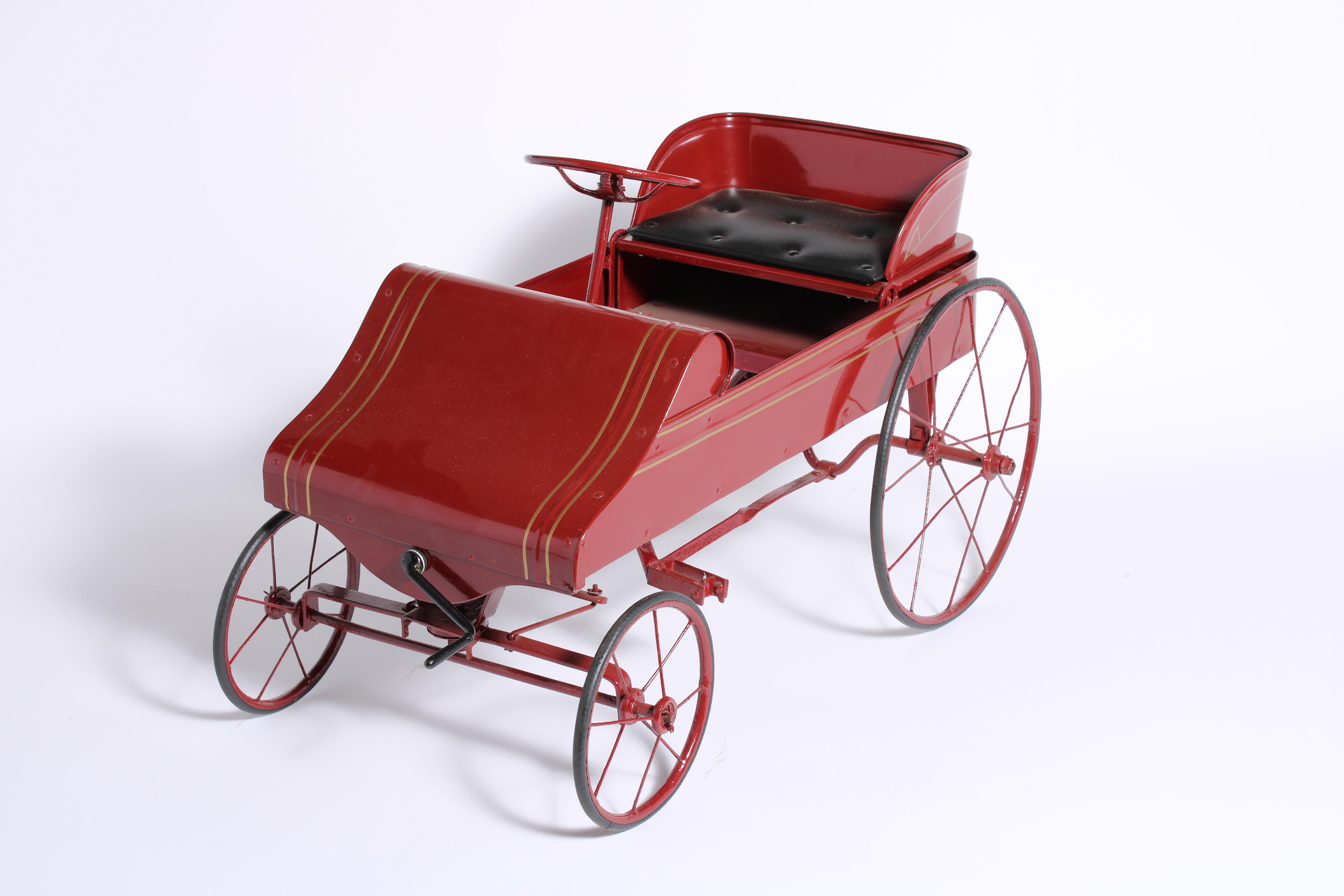


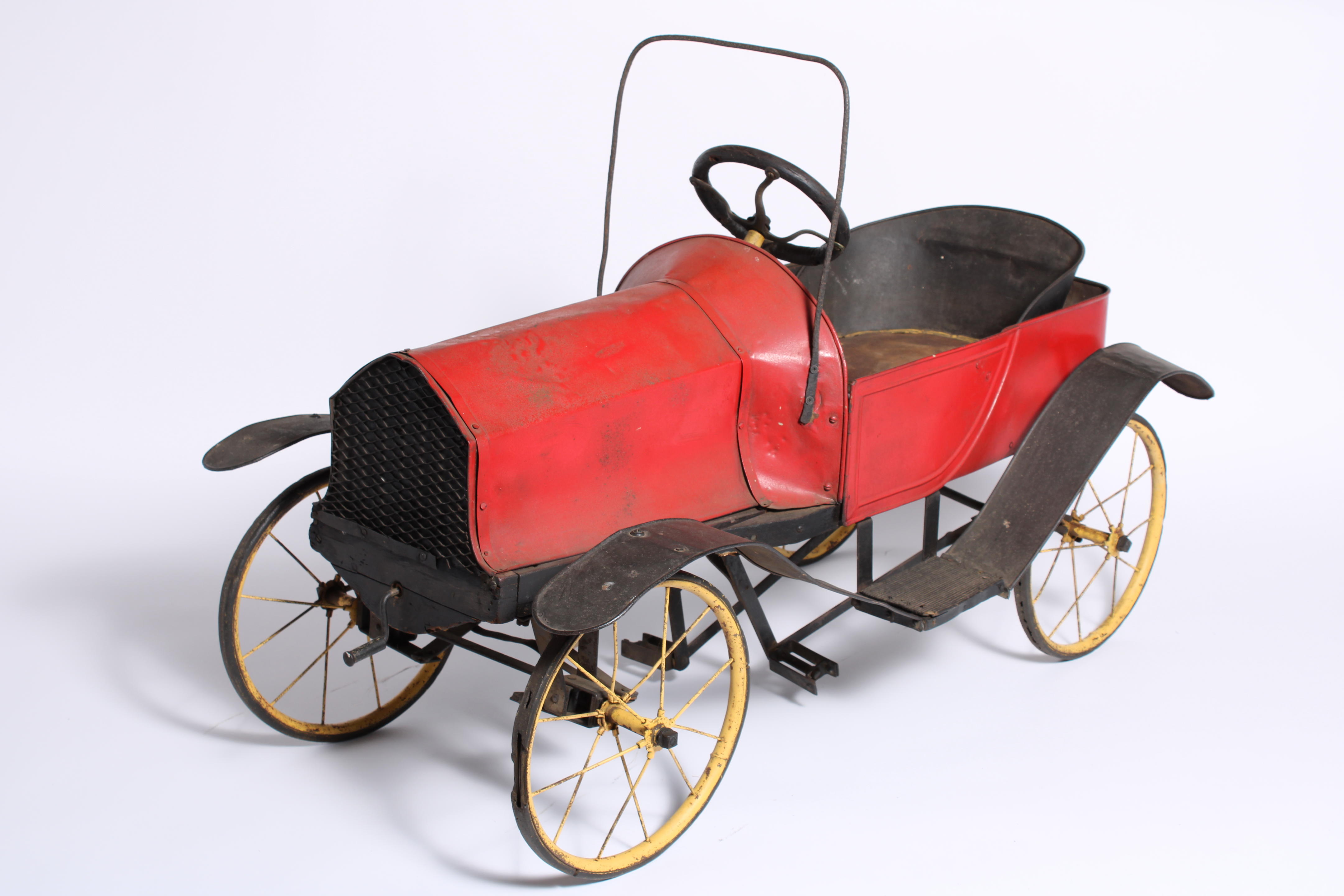
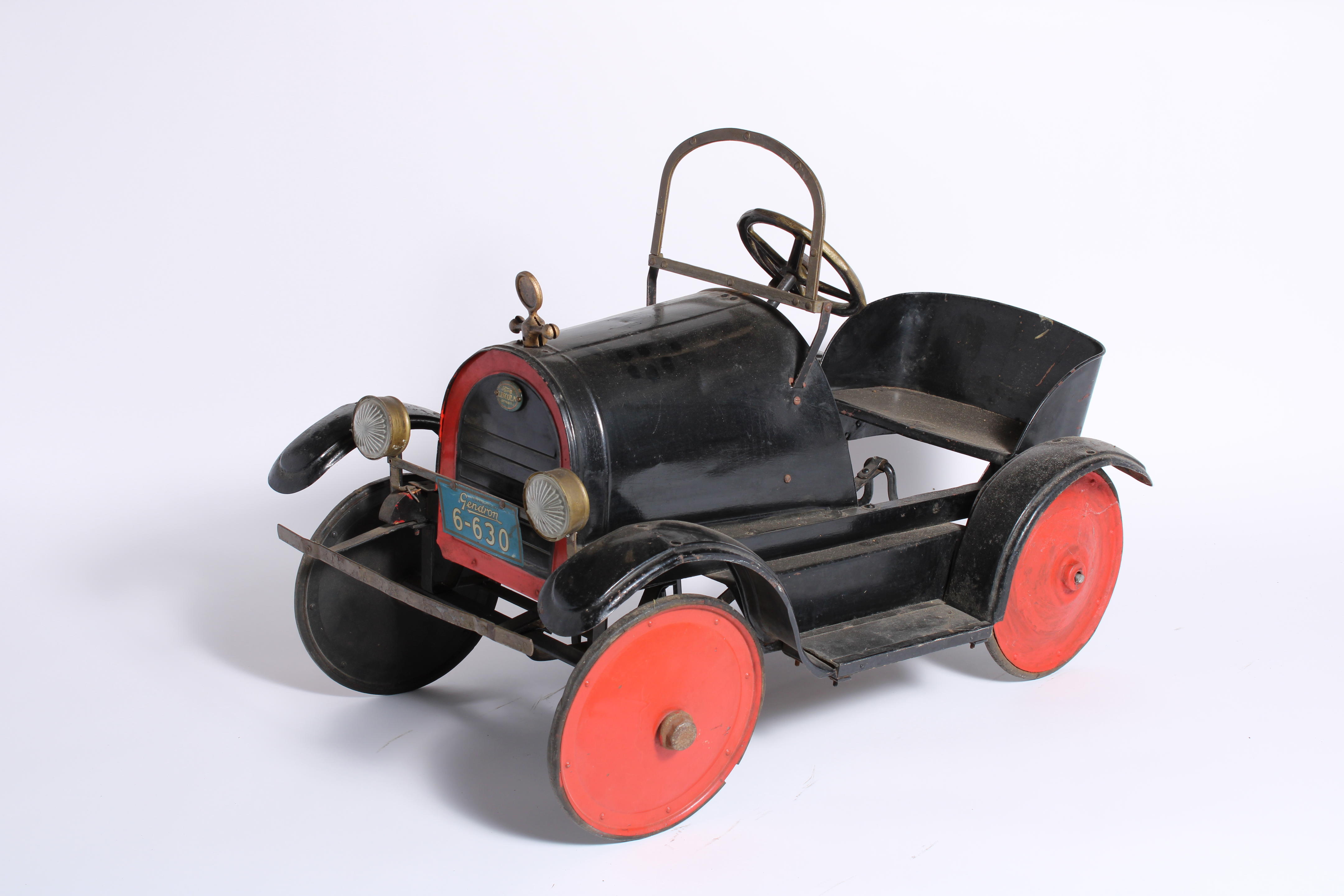
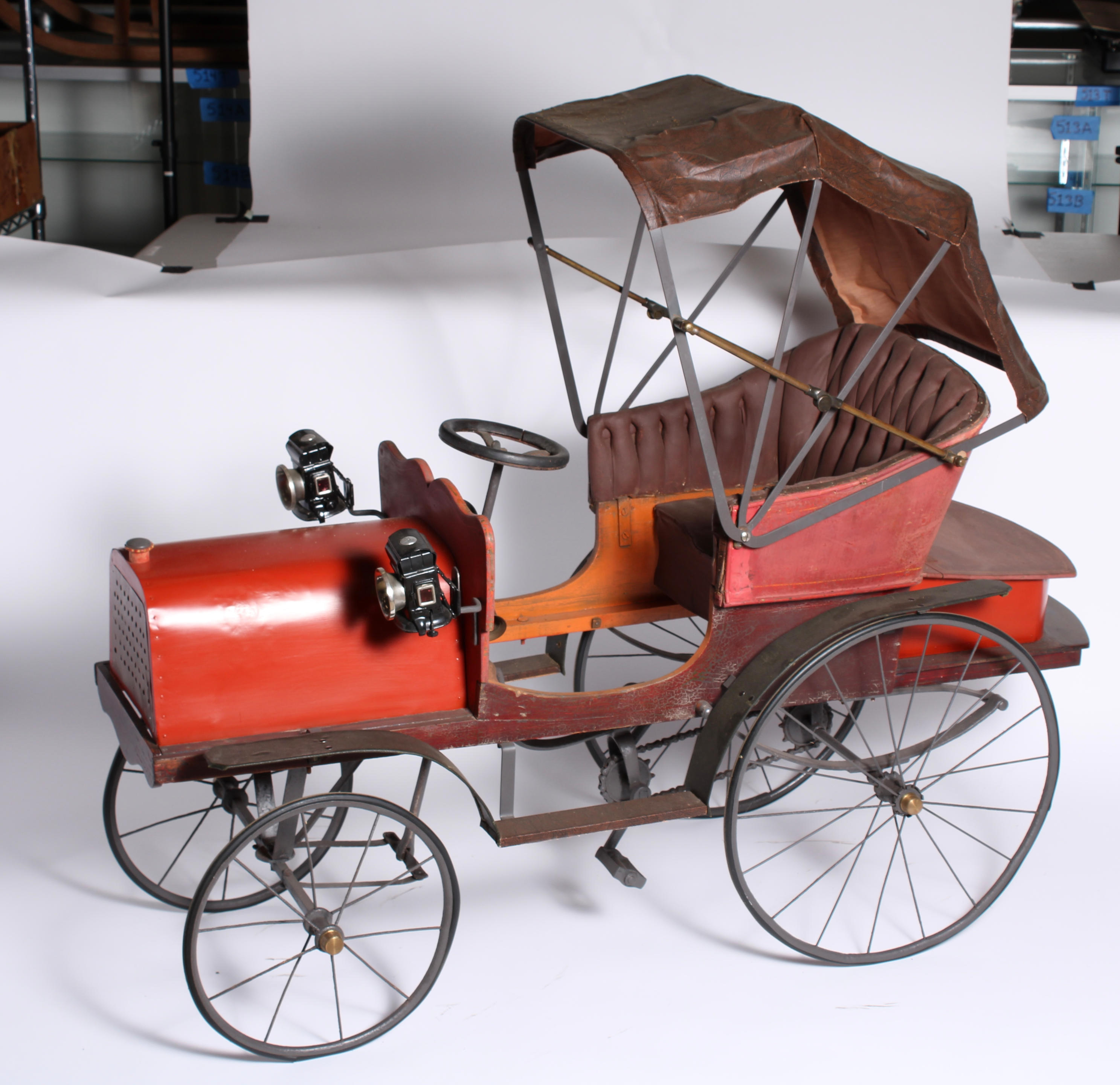
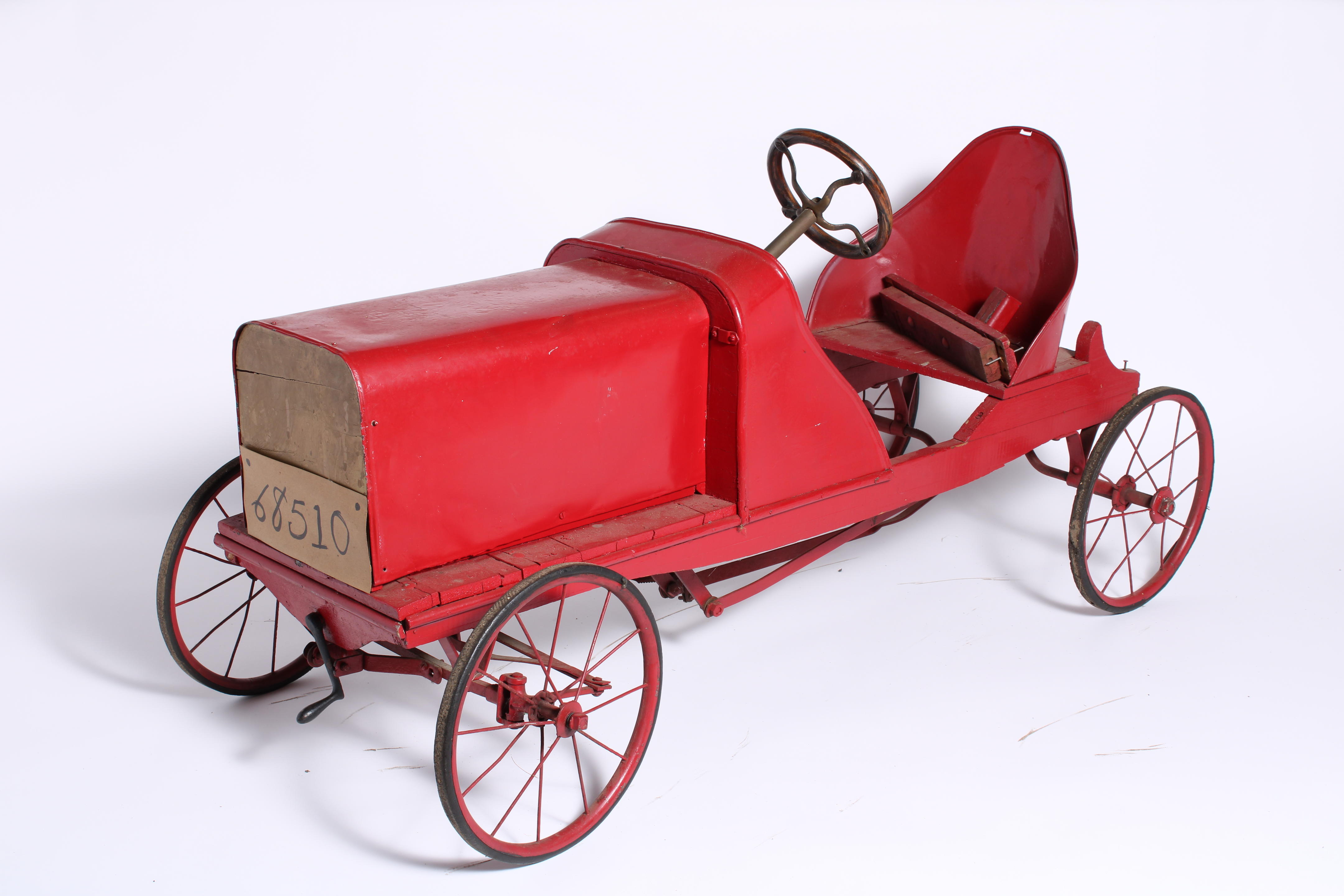
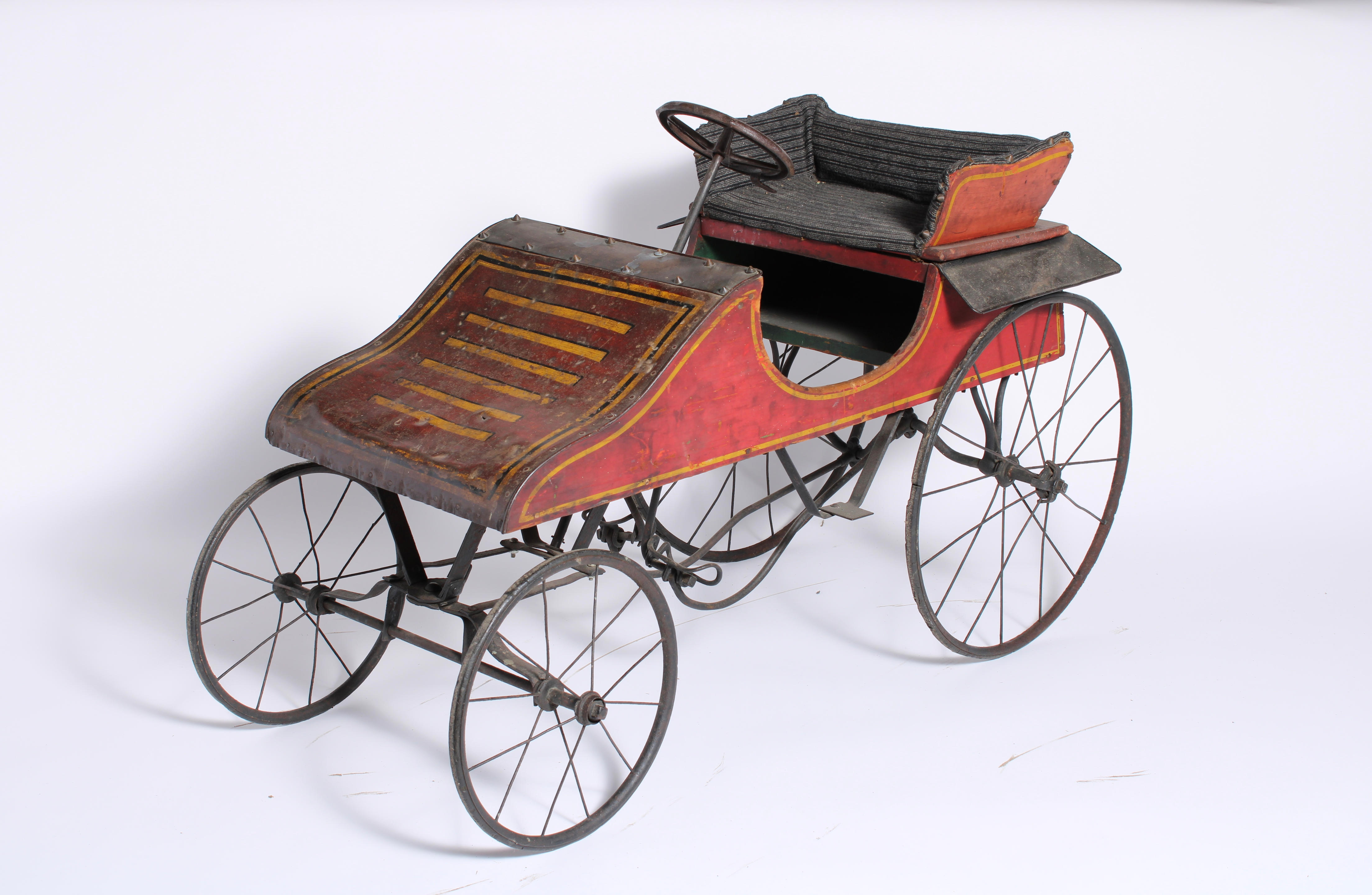
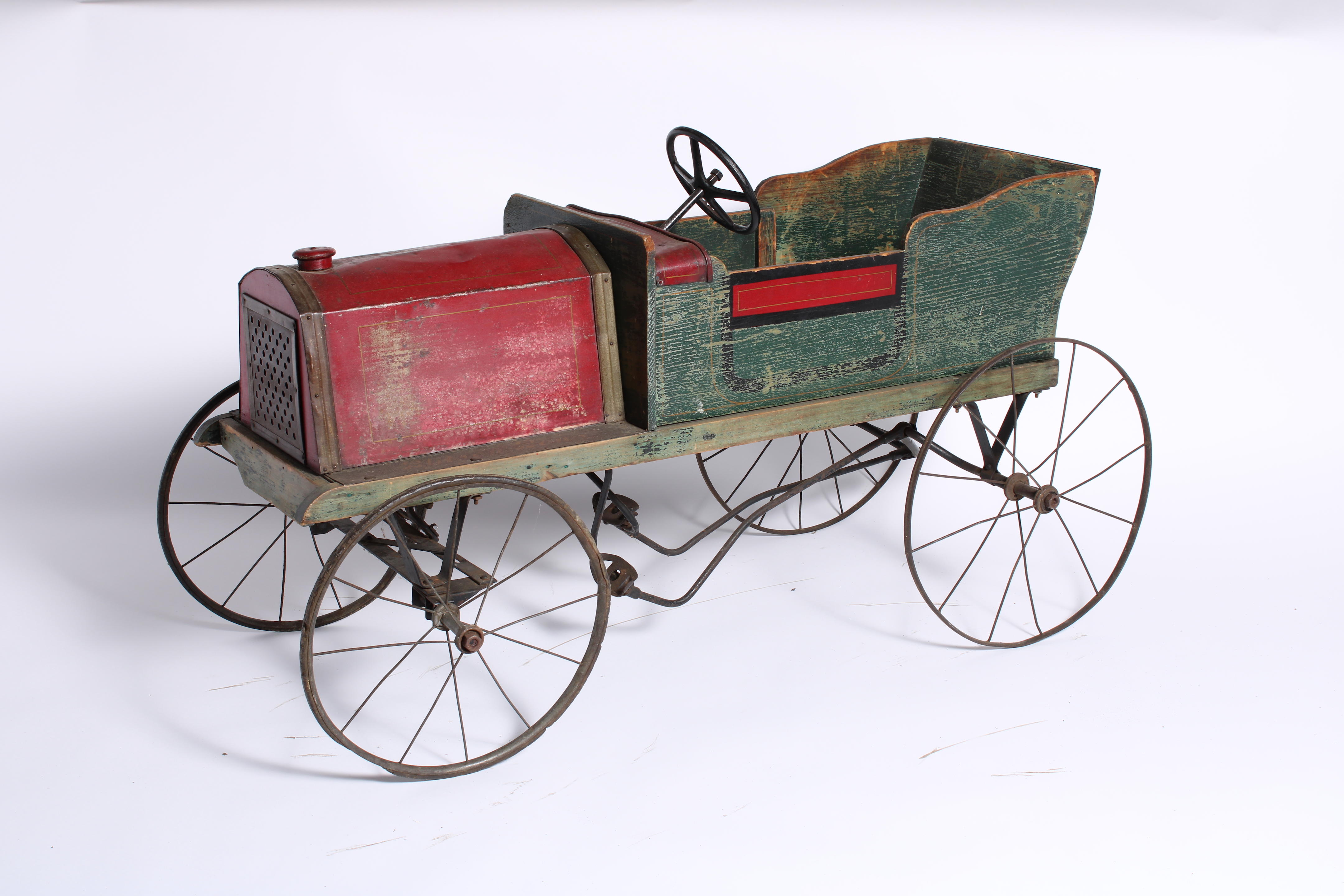
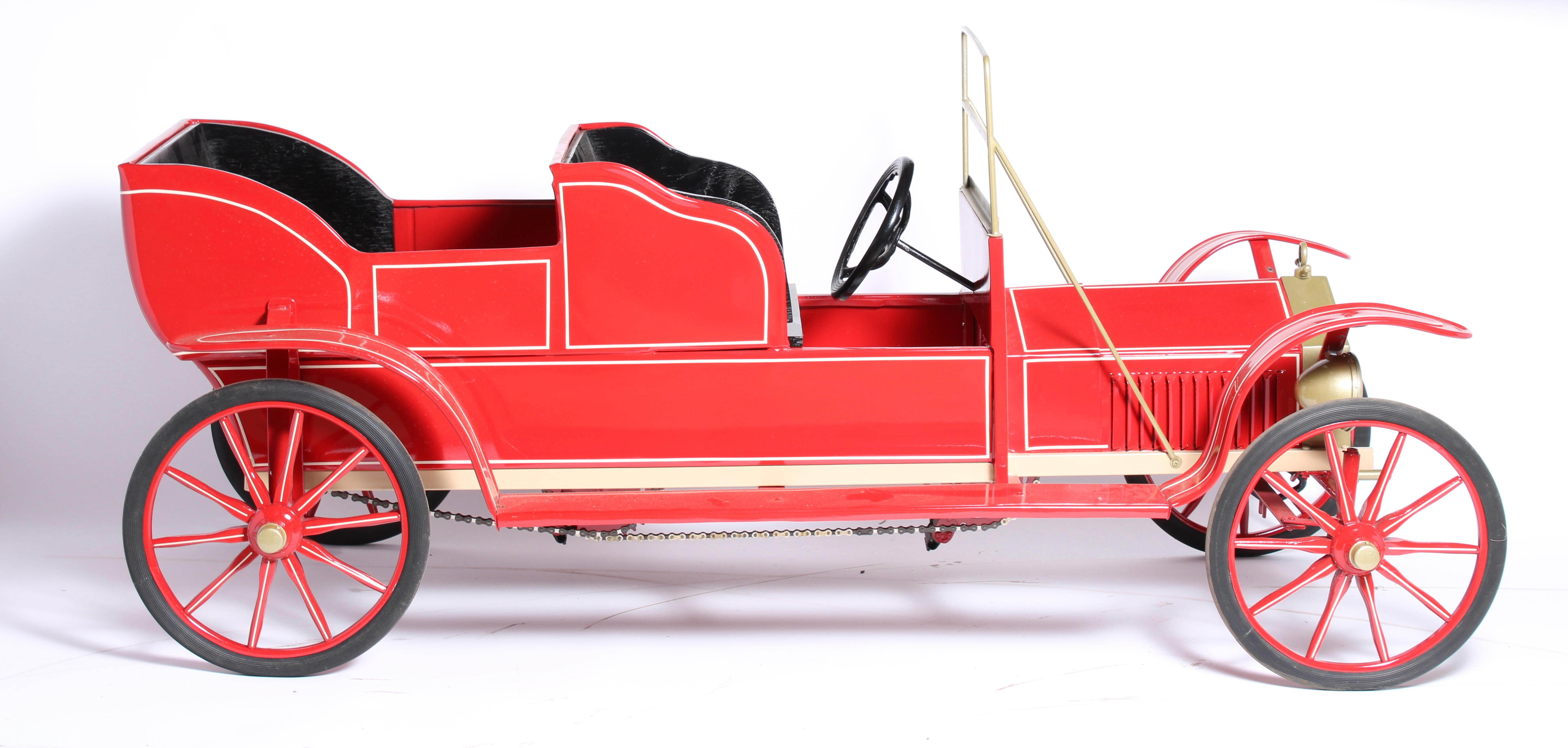
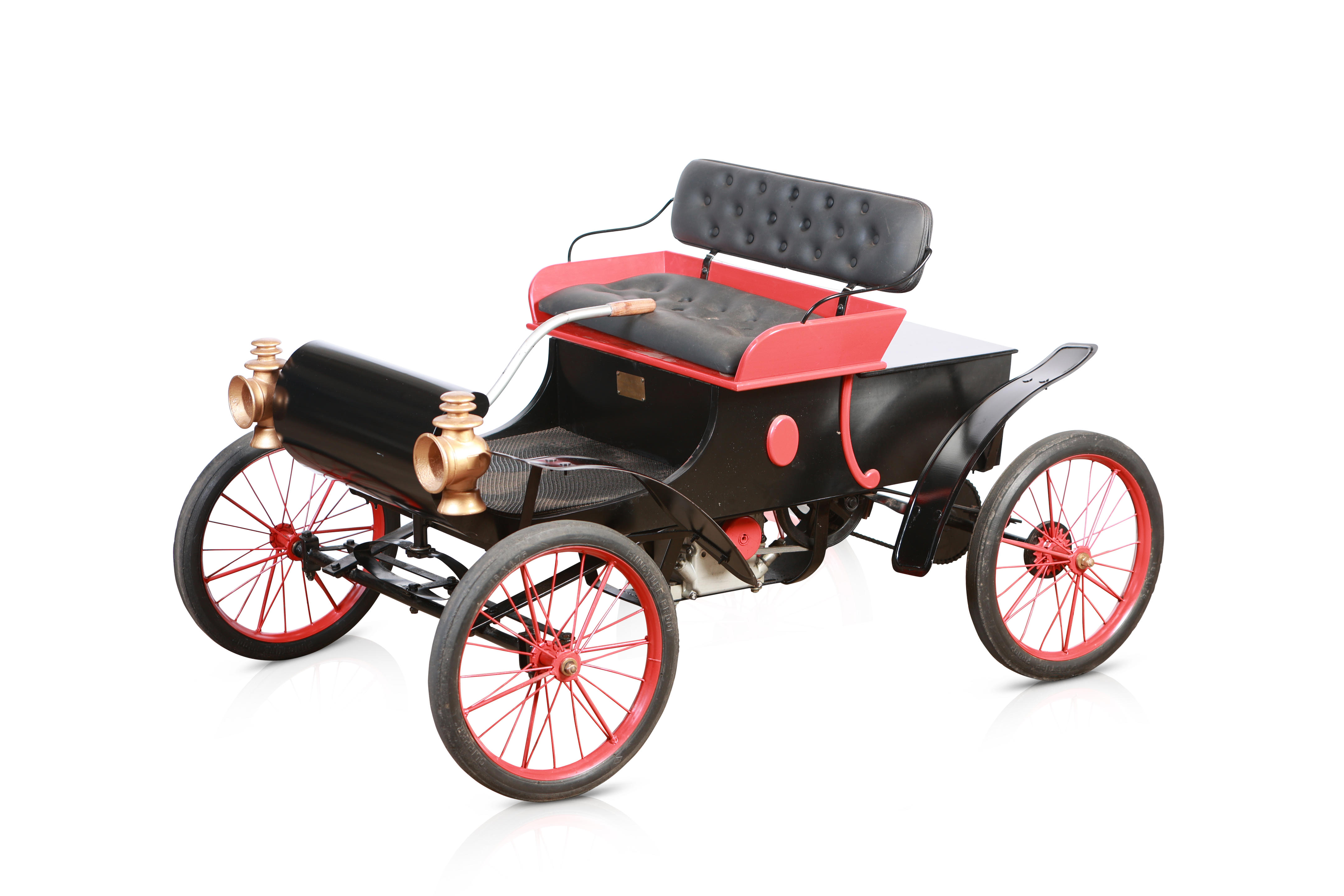
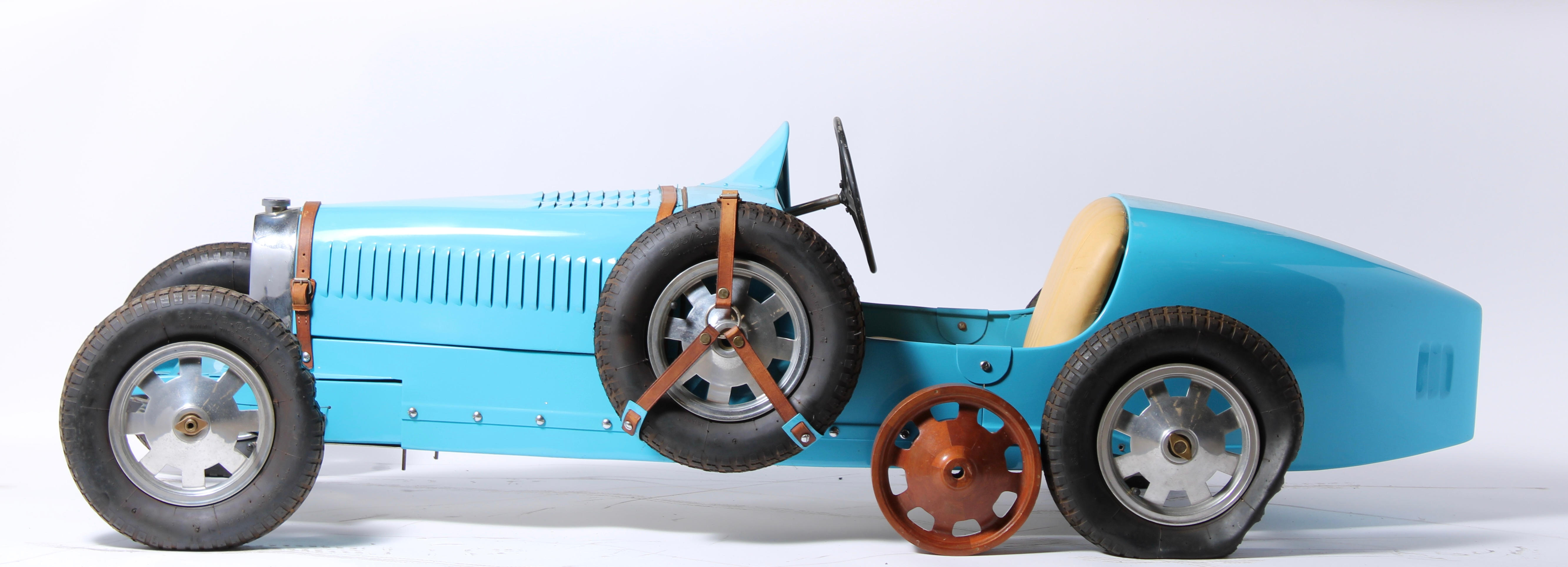
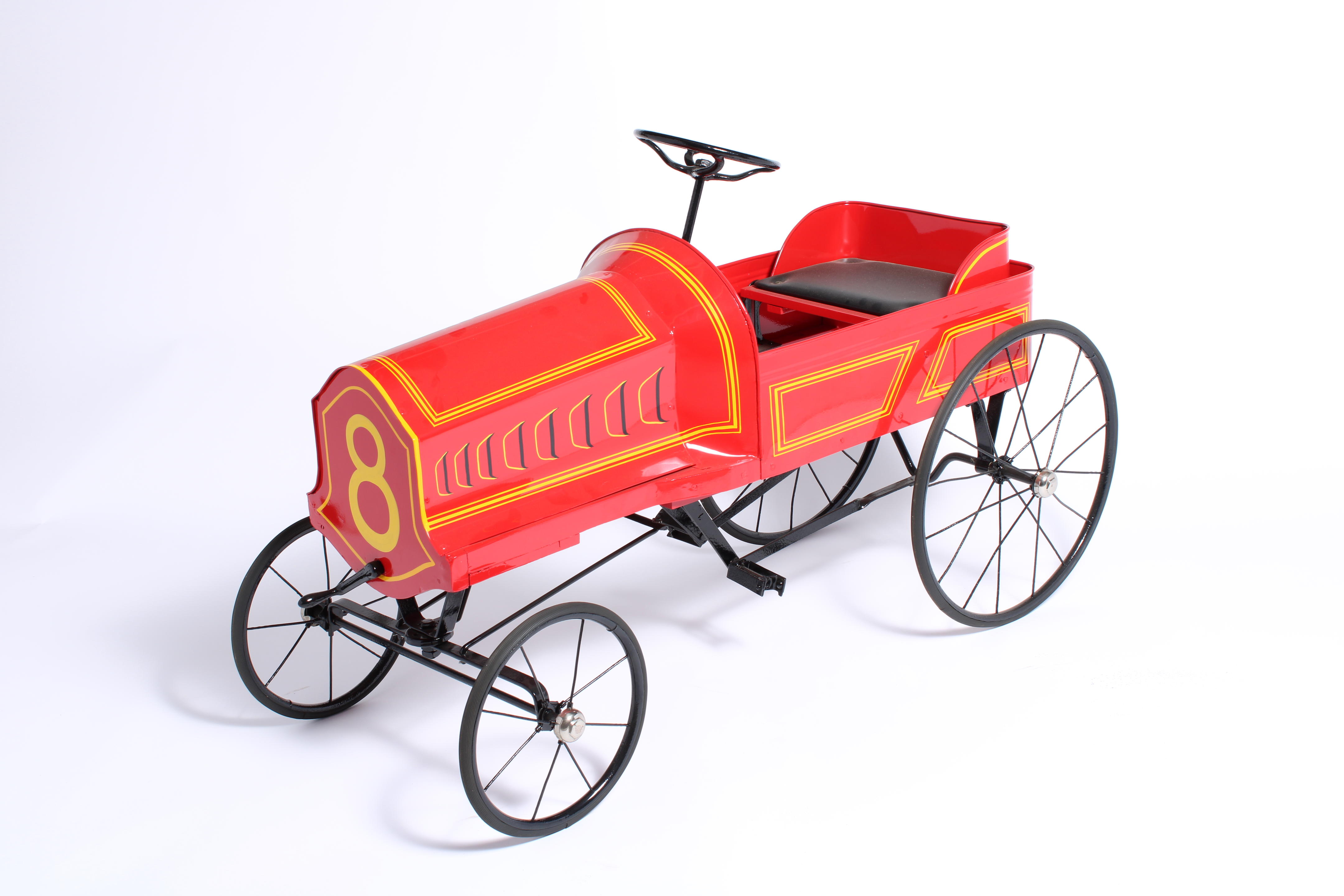
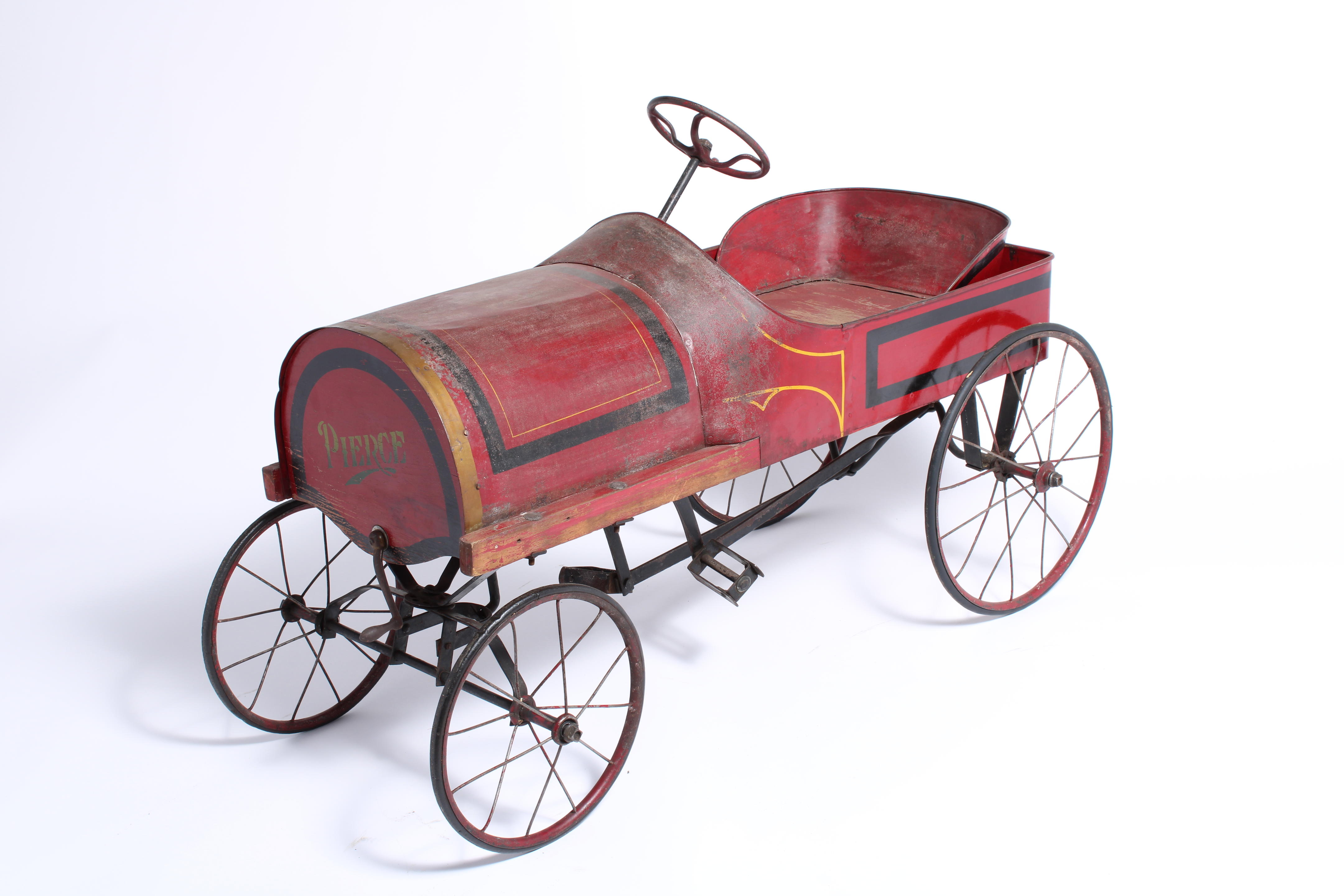

Try LotSearch and its premium features for 7 days - without any costs!
Be notified automatically about new items in upcoming auctions.
Create an alert